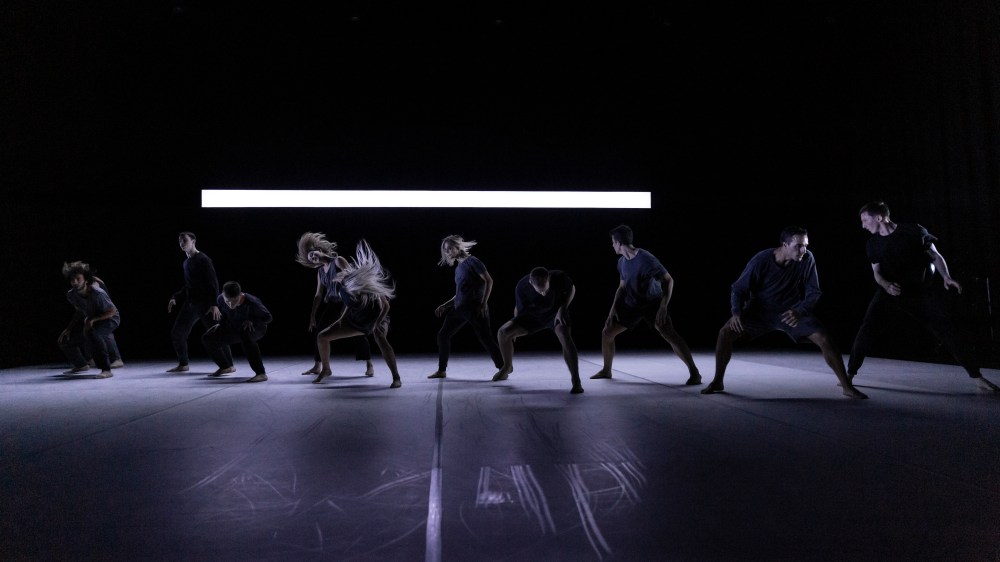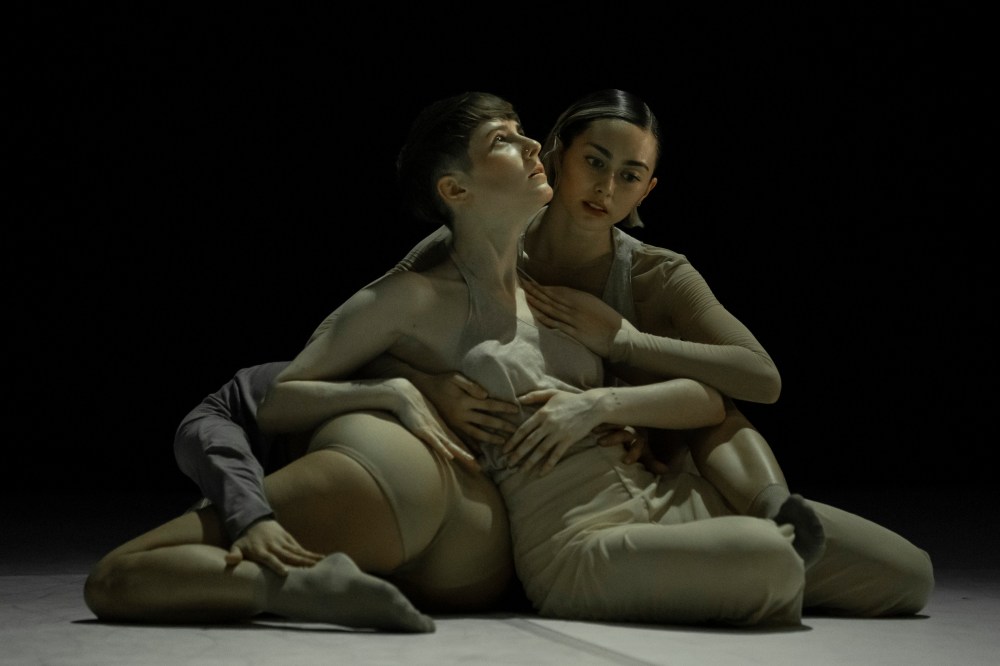Carriageworks, Sydney, December 6
The mysteries of dance and dancemaking are great. What drives the need to watch this person closely and not that one? Why does a work speak to something deep within while another is superficially entertaining? How is it that one is engaged intellectually and emotionally with one piece of dance while finding another pleasing enough in the moment but forgotten shortly after?
It is, of course, the job of the critic to analyse these matters and build an argument. It’s important, too, to convey a sense of the occasion so the reader may come away thinking they’d rather like the piece the writer did not rate highly, or would rather remove their own appendix than endure the work so lavishly praised.

A program such as Sydney Dance Company’s New Breed (or Queensland Ballet’s Synergy, or The Australian Ballet’s Bodytorque) bring these thoughts into even greater focus than usual. This is where new work is presented, sometimes by experienced choreographers and often by relative or total neophytes. It’s a given that all pieces are danced spectacularly well by company members. The works may not have much – or anything – in the way of sets but they will be professionally lit and costumed. Nothing will last more than about 25 minutes and some much less. There are always four or sometimes five works on the program, often coming from incredibly different directions. Variety is a given and because the viewer is unlikely to be deeply familiar with any choreographer’s work the element of surprise can be great. You’re not necessarily going to like everything but almost certain to come away satisfied that you got your money’s worth. Which, because New Breed tickets were $35, you most certainly did.
Repertoire building is not the primary goal of these programs – their focus is on giving choreographers an opportunity to develop their craft – but bringing more experienced independent choreographers to a wider audience can be beneficial to both sides. New Breed is where SDC artistic director Rafael Bonachela found Gabrielle Nankivell’s Wildebeestand Melanie Lane’s WOOF, which he then put into mainstage seasons. On the development front, Bodytorque is where TAB nurtured Alice Topp, now a resident choreographer, and before her Tim Harbour, ditto. Rising star Jack Lister got his start at QB in its studio presentations, he recently choreographed for Birmingham Royal Ballet’s main program which was seen in Birmingham and at Sadlers Wells, and is now transferring to Brisbane’s Australian Dance Collective (formerly Expressions Dance Company) where he will be both dancer and choreographer from next year.

So what of this year’s New Breed? There are four works, two by SDC company members Davide Di Giovanni and Ariella Casu and the others by Lauren Langlois and Josh Mu, both of whom are old hands in the independent contemporary dance scene.
Di Giovanni’s In Walked Bud, a dance for two women and a man to the music of Thelonius Monk, looked sophisticated and fun. Guy Hastie dressed Holly Doyle and Chloe Leong in to-die-for black unitards with cheeky pink fringing on one leg, Alexander Berlage lit the stage with expanding ovals of light, unlit it with a handful of blackouts and threw shadows with backlighting. Doyle, Leong and Luke Hayward were Hollywood glamorous and were almost enough compensation for a lumpy structure that had audiences at sea about whether the piece had ended or was continuing.

Casu’s Arise was clearly heartfelt but its territory is well-worn. A group of nine dancers was at first aggressive, frantic, robotic and impassive in tight shiny hoodies (Aleisa Jelbart designed, as she did three of the four New Breed works). When they shed this dark upper garment it was if they were reborn into a state of innocence and unworldliness.
Josh Mu’s Zero, which ended the program, was danced to the energising beat of Huey Benjamin’s electronic score. While it perhaps didn’t fully convey Mu’s theme of humanity teetering on the edge of existence, the large group of 11 dancers made the piece zing from go to whoa and hyperactive Chloe Young, intriguingly hiding much of the time behind a long veil of hair, threw herself into the moment and consumed space and energy as if there were no tomorrow. Emily Seymour’s superbly controlled rotations while lying on the floor were less easy to fit into the picture but were quite magical.

Which leaves Creeper, by Lauren Langlois. At 25 minutes her piece for four women was the longest (by a few minutes) of the evening’s works. It was also the only one that to me felt fully formed and realised. Only in Creeper did I feel any curiosity about who these people were and what they felt.
The immediate impression was of a strange, unsettling place and restless, unsettled people. Berlage’s lighting (he worked on all four pieces) at first gave the stage a light green tinge and later a purply wash; eerie or sickly, depending on your interpretation. Jason Wright’s sound design was equally elusive and disorienting. The women – Jesse Scales, Ariella Casu, Holly Doyle and Chloe Leong, all memorable – stood apart from one another although the focus was on Scales, moving slowly as the others moved even more slowly, each apparently with her own thoughts. Staggering steps brought them together, stuttering, ungainly, awkward, even ugly, but affecting. This is what the internal conflict and anguish we usually hide beneath a polite exterior look like.

The woman needed one another even as they also took their own paths, looking for – who knows what? It could be consolation in difficult times, the strength of the group, or the basic drive to survive even though the world is a blasted desert. In some ways Creeper could be a companion piece to Antony Hamilton’s unforgettable Keep Everything (2014), in which Langlois performed, brilliantly. There’s the same fractured, extreme physicality and interest in how technology challenges the whole of humanity and our personal interactions with others. That said, Creeper is very much its own work, with much greater emphasis on the possibility of emotional engagement. I could see it again and again, for the way the women huddled together for comfort; that repeated gesture of raising a foot behind them and brushing it with a hand; the phenomenal Scales’s intense upwards gaze that searched the universe; and so much more.